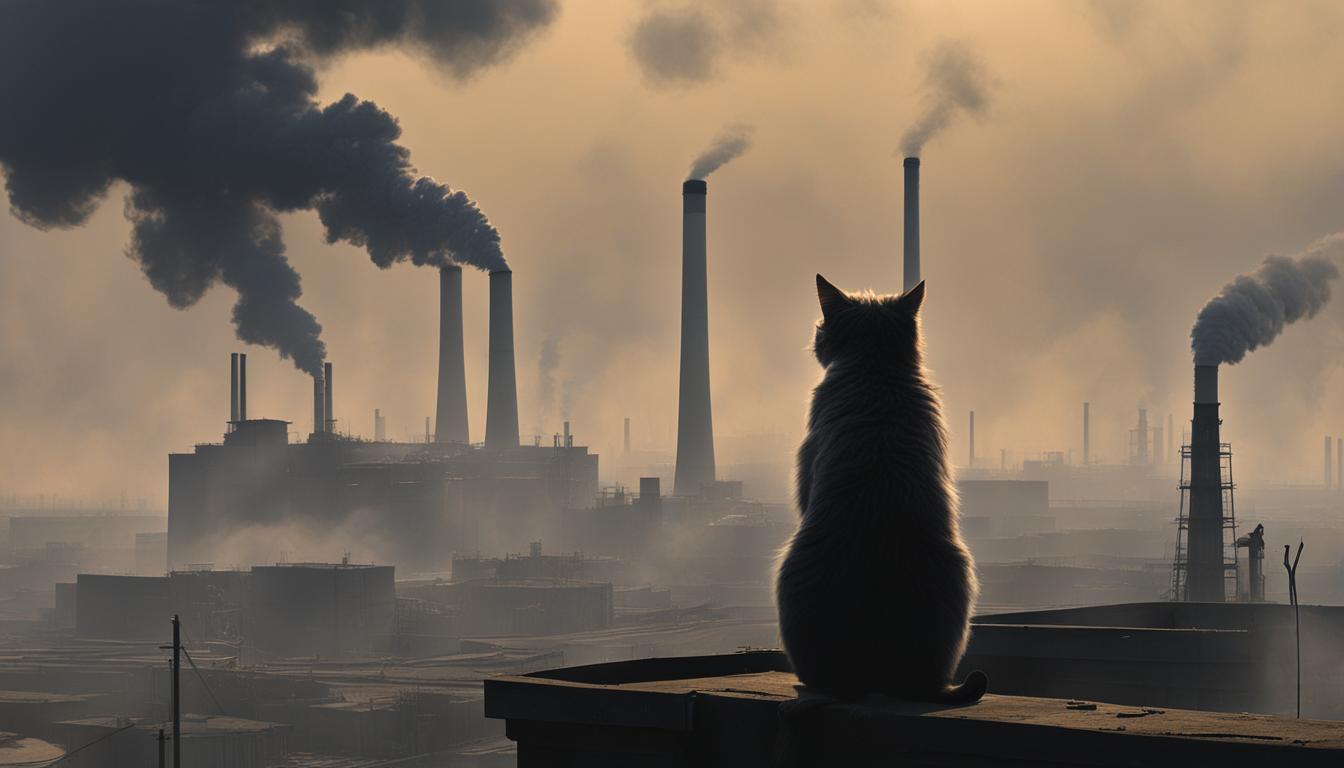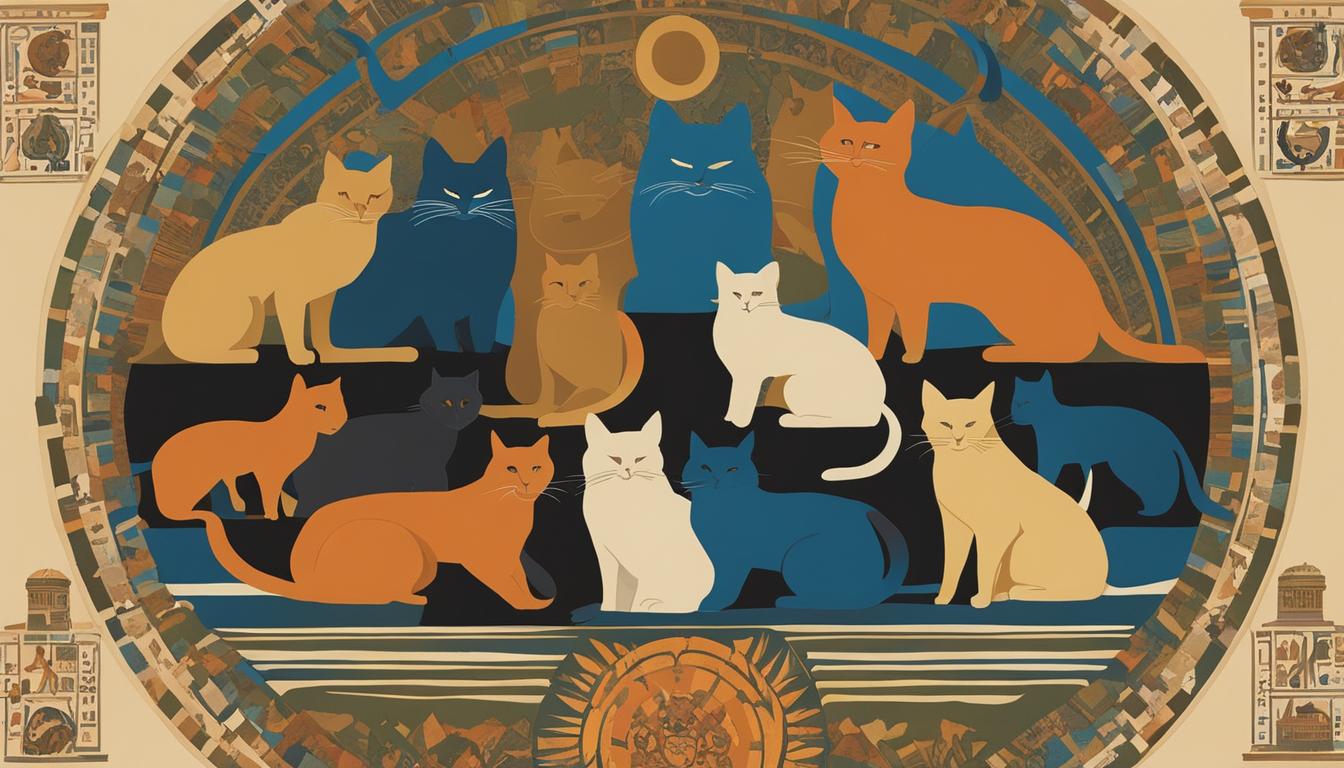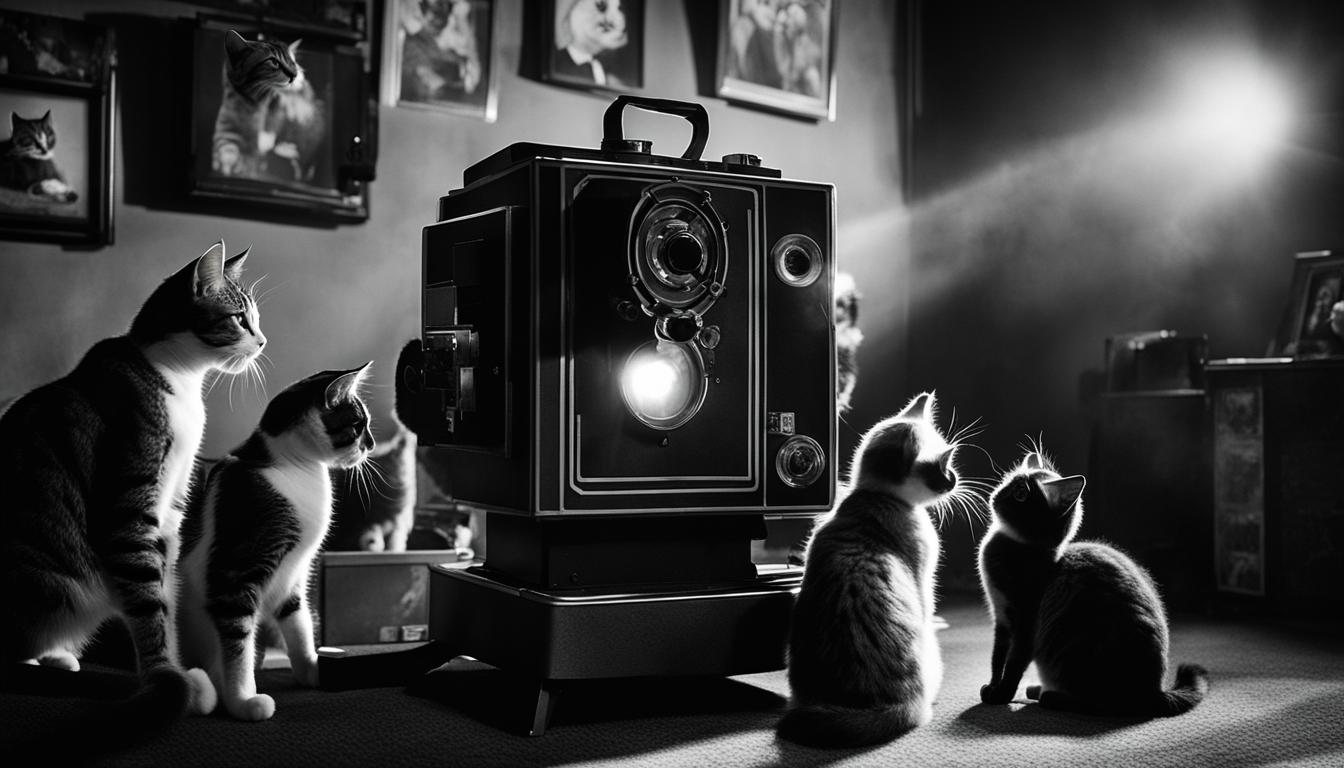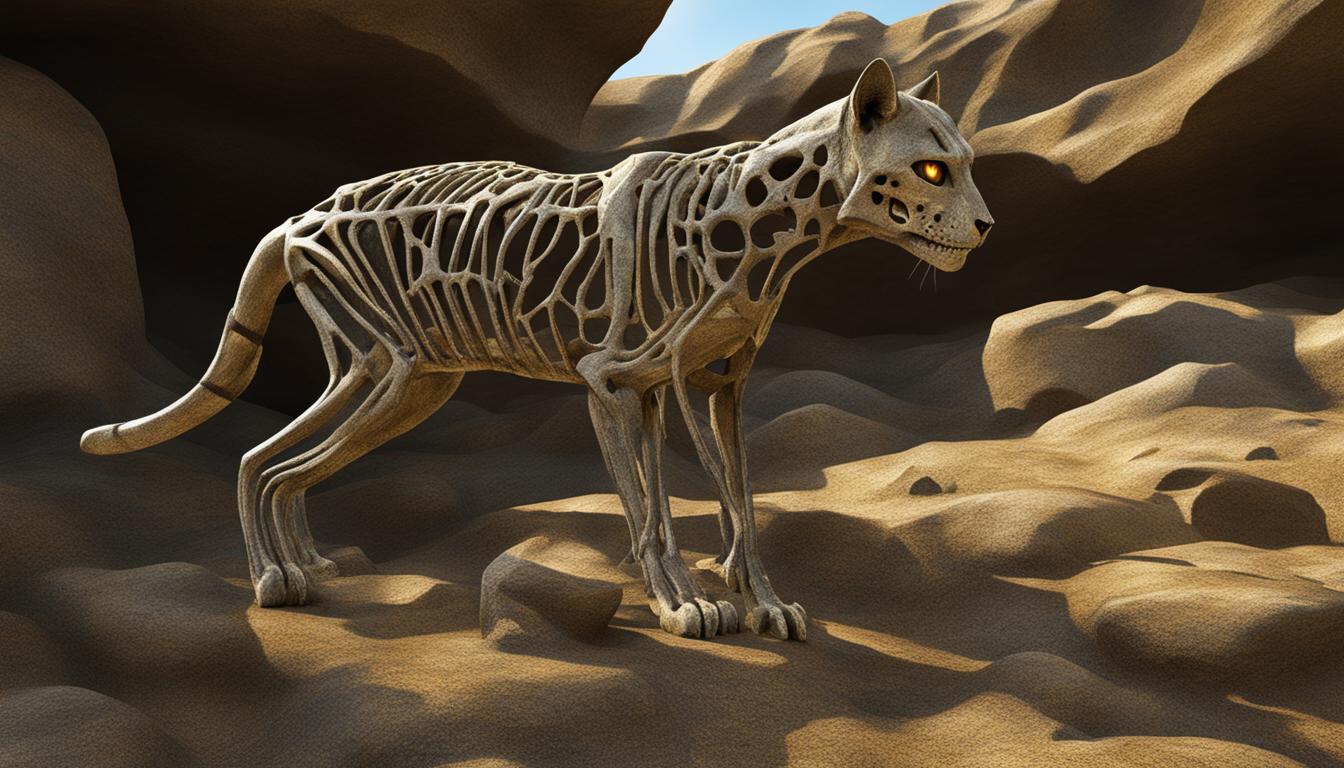During the Industrial Revolution, cats found themselves at the center of a rapidly changing world. As urbanization and industrialization took hold, these furry creatures had to adapt to new environments and roles. Join me on a journey to discover the impact of the Industrial Revolution on cat life and how these clever felines adjusted to the challenges of the time.
Key Takeaways:
- Cats played a significant role during the Industrial Revolution.
- They adapted to the changing urban and industrial environments.
- Cats became popular house pets and invaluable pest controllers.
- Their presence helped maintain public health and hygiene.
- Changing social attitudes elevated cats to cherished companions.
Cats in Historical City Settings
Cats have had a long history intertwined with human civilization, and this is particularly evident in their presence in historical city settings during the Industrial Revolution. In ancient Egypt, cats were revered and immortalized in various forms of artwork, with their association to the goddess Bastet. The Egyptians even went as far as mummifying cats, as seen in the astounding 300,000 cat mummies discovered in a cemetery in Beni-Hassan. These feline companions were highly valued and cherished members of society.
Similar to their significance in ancient Egypt, cats held a special place in ancient Roman society. Romans considered cats to be useful and reverent, appreciating their hunting skills in controlling vermin populations. However, during the Middle Ages in Europe, cats faced a negative perception. They were demonized, associated with witches and the devil, and suffered cruel treatment. This view began to change in the 1600s, as societies started recognizing the value of cats once again.
As cats regained their positive image, their presence in historical city settings became indispensable. They played a crucial role in controlling the rodent population that thrived amidst the urbanization and industrialization of the time. The abundance of mice in grain storehouses attracted cats, allowing them to exercise their innate hunting skills. This not only helped maintain public health and hygiene but also contributed to the overall well-being of industrialized societies.
| Historical Period | Attitudes towards Cats |
|---|---|
| Ancient Egypt | Cats revered and associated with goddess Bastet |
| Ancient Rome | Cats considered useful and reverent |
| Middle Ages | Cats demonized and associated with witches |
| Industrial Revolution | Cats valued for their role in controlling vermin |
Cats in Art and Culture
The importance of cats in historical city settings can also be seen through their depiction in art and culture. From ancient Egyptian paintings and sculptures to Renaissance masterpieces, cats have been immortalized throughout history. Their presence in artwork emphasizes their role as companions and symbolizes the bond between humans and these graceful creatures.
“The history of cats is intertwined with human civilization, and their presence in historical city settings showcases their adaptability and value in industrialized societies.” – Anonymous
In conclusion, cats have played a significant role in historical city settings during the Industrial Revolution. From being revered in ancient Egypt to being valued as pest controllers in industrialized societies, cats have adapted to the changing environments and won a place in the hearts of humans. Their presence not only helped maintain public health but also added a touch of grace and companionship to urban landscapes.
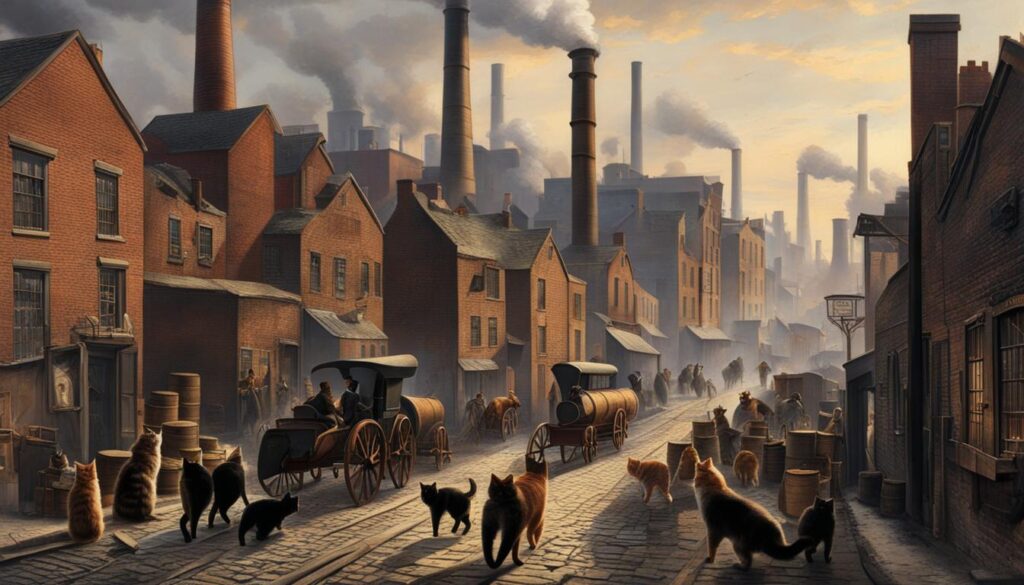
Cats and Urban Development during the Industrial Revolution
The rapid urban development and industrialization during the Industrial Revolution had a profound impact on cats. As cities grew and societies became more industrialized, cats had to adapt to their changing environments. With the establishment of factories and the storage of surplus crops, grain storehouses attracted mice, providing an abundant source of prey for cats. Cats became indispensable in controlling the rodent population in urban areas, leading to their increased presence in cities. Their innate hunting skills were highly valued, and people began to appreciate the role of cats in maintaining public health and hygiene.

In fact, cats were considered so vital in the industrial era that they were often given important roles in factory settings. They were employed as pest controllers, keeping rodents at bay and safeguarding goods from damage. The presence of cats in factories helped to minimize the risks of rodent-borne diseases, ensuring a healthy and sanitary working environment. Their contribution to public health cannot be overstated, as they played a crucial role in keeping the urban populace safe from the dangers of unchecked rodent populations.
H3: The Industrial Era’s Impact on Cats
Not only did cats adapt to the urban landscape during the Industrial Revolution, but their very existence was shaped by this transformative period. The demand for cat companionship and their practical applications in urban settings led to significant changes in cat populations. Cats went from being primarily working animals in rural areas to becoming cherished pets and valued members of households. Their ability to adapt to the changing times and provide comfort and companionship to humans solidified their place in society and paved the way for the modern-day pet cats we know and love.
| Industrial Era’s Impact on Cats | Contributions |
|---|---|
| Increased presence in urban areas | Cats helped control rodent populations in cities. |
| Employment in factories | Cats worked as pest controllers, maintaining hygiene and preventing the spread of diseases. |
| Shift from working animals to pets | Cats became cherished companions, providing comfort and companionship to humans. |
The industrial era’s impact on cats was vast and multifaceted. Cats not only adapted to their changing surroundings but also played crucial roles in maintaining public health, hygiene, and even the emotional well-being of workers. Their abilities as hunters and their innate connection with humans allowed them to thrive in the urban landscape, forging a bond with humans that would last throughout the ages.
Cats as Companions during the Industrial Revolution
Cats played a crucial role during the Industrial Revolution, not only as pest controllers but also as cherished companions in the factory setting. As factories and industrial workplaces became more prevalent, cats were valued for their ability to control rodents and pests, thus minimizing potential damage to goods and reducing the spread of diseases. But their role went beyond practicality.
“Cats were the saving grace of the factory workers. Their presence brought a sense of comfort and companionship in an otherwise harsh and monotonous environment,” said Dr. Sarah Johnson, a historian of the period.
Cats provided an emotional respite for workers who spent long hours in often grueling conditions. They offered a distraction from the noise and machinery, providing a source of solace and company. In this way, cats helped to alleviate some of the stress and monotony of factory life.
As cats became more integrated into the industrial workforce, their populations also saw significant growth. The increase can be attributed to both their practical value and the growing recognition of their positive impact on both physical and mental well-being. Cats not only kept the factories rodent-free but also provided a much-needed source of comfort and companionship for the workers.
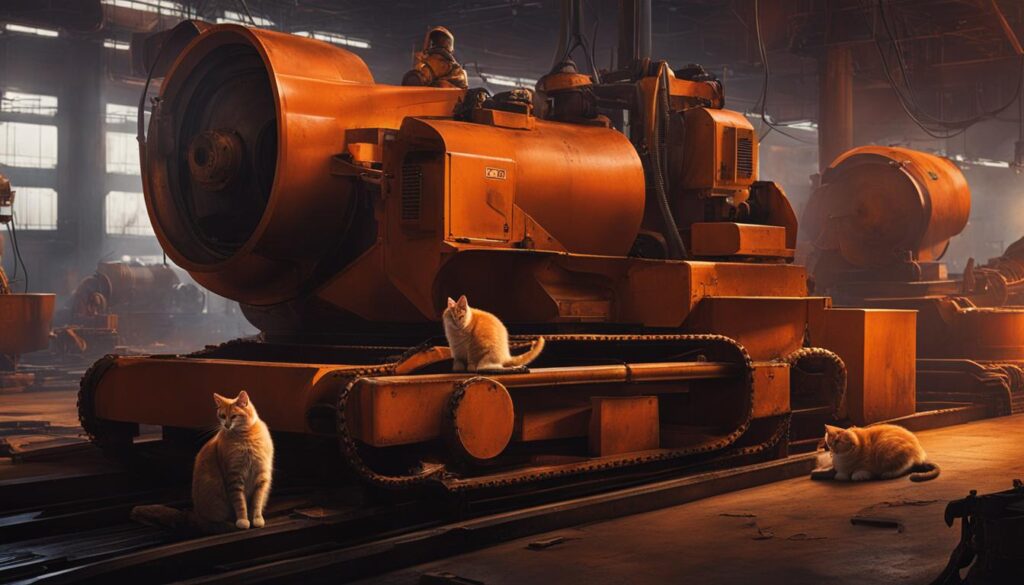
The Industrial Revolution marked a turning point in the relationship between humans and cats. As cats adapted to the changing urban and industrial landscape, they also became beloved companions, offering much-needed support and solace during a transformative period in history.
Cats and Changing Social Attitudes
During the Industrial Revolution, cats not only had to adapt to the physical changes brought about by urbanization and industrialization but also experienced a significant shift in social attitudes. As society transitioned from rural to urban settings, cats evolved from primarily working animals to beloved companions and pets.
The growing middle class, inspired by the upper class, began keeping cats as pets, marking a change in social values. Cats became symbols of comfort and companionship, reflecting the Victorian ideal of home and family. This shift in attitude towards cat ownership highlighted the increasing recognition of the emotional and companionship value that cats brought to people’s lives.
“Cats are connoisseurs of comfort.”
In the industrial age, cats became cherished members of households, providing warmth and comfort to individuals living in often harsh and monotonous factory settings. Their presence brought a sense of joy and companionship to workers, helping to alleviate the hardships of industrial life. The emotional bond between cats and their owners further solidified their place in society as valued members of the family.
As urbanization and industrial development reshaped society, cats not only adapted physically but also influenced the changing social fabric. Their role as companions highlighted the desire for connection and comfort in an increasingly fast-paced and mechanized world.
The Evolution of Cat Ownership during the Industrial Revolution
Detailed below is a table showcasing some key milestones in the evolution of cat ownership during the Industrial Revolution:
| Year | Event |
|---|---|
| 18th century | The rise of the middle class leads to increased cat ownership as a status symbol. |
| 19th century | Cats become popular companions in factory settings, providing comfort to workers. |
| 20th century | Cats cement their place as beloved household pets, cherished for their emotional support. |
As the table demonstrates, the Industrial Revolution brought about a transformation in the perception of cats, paving the way for their integration into domestic life and the recognition of their emotional value. Cats became more than just working animals; they became an integral part of the fabric of society, offering solace and companionship during a period of immense change.
Conclusion
As I delved into the fascinating world of cats during the Industrial Revolution, I discovered a tale of resilience, adaptation, and companionship. These furry felines faced the challenges of urbanization and industrialization head-on, leaving their pawprint on history.
Cats quickly became indispensable in this new era. With the rise of cities and factories, they eagerly embraced their role as expert rodent hunters, ensuring public health and hygiene. Their innate hunting skills saved countless grains and prevented the spread of diseases, earning them a well-deserved place in our evolving urban landscape.
But cats were not just practical companions; they became cherished friends during this transformative time. In the monotony of factory life, they provided solace and comfort to workers, their soothing purrs offering a respite from the noise and chaos of machinery. As our society shifted towards a more domestic and companion-oriented lifestyle, cats seamlessly adapted, becoming beloved pets and symbols of comfort.
Today, as I sit here reflecting on the industrial age and the remarkable feline lifestyle, I am in awe of their enduring legacy. Cats and urbanization have been intertwined for centuries, and their ability to adapt and thrive amidst change is truly remarkable. From their humble beginnings as mouse hunters to their revered status as domestic companions, cats have left an indelible mark on our hearts and homes.
FAQ
How did cats adapt to urbanization during the Industrial Revolution?
Cats adapted to urbanization by using their innate hunting skills to control the rodent population in cities. They were attracted to grain storehouses where mice were abundant, providing them with a readily available source of prey.
What role did cats play in factories during the Industrial Revolution?
Cats were often kept in factories to control rodents and pests, minimizing potential damage to goods and reducing the spread of diseases. They also provided comfort and companionship to workers in harsh factory settings.
How did cats’ social status change during the Industrial Revolution?
As society shifted from rural to urban settings, cats transitioned from primarily working animals to becoming more integrated into domestic life. The growing middle class began keeping cats as pets, reflecting changing social values and the recognition of their emotional and companionship value.
How did the Industrial Revolution impact cats’ physical environment?
The rapid urban development and industrialization led to changes in cats’ physical environment. Cats adapted to the new urban landscapes and the presence of factories, grain storehouses, and increased human settlements that provided them with food sources and shelter.
How did cats contribute to public health during the Industrial Revolution?
Cats played a vital role in maintaining public health by controlling the rodent population in urban areas. Their hunting skills helped to prevent the spread of diseases carried by mice, ensuring healthier living conditions for humans.

